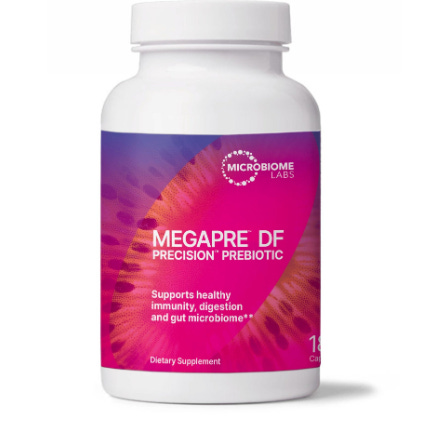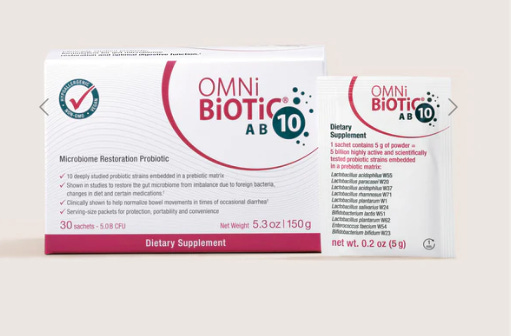Vacation travel plans?
Graduations, weddings, parties, Summer, oh my!
June is here!
The glorious first month of Summer, still filled by rites of passage from graduations to weddings, birthday celebrations, 4th of July holiday, and vacation!
This is all the good stuff, fun, exciting, events and seeing people we love who live far away. There is a lot to do, to plan for, to pack. But traveling often brings with it an unwelcome companion: CONSTIPATION!

Traveling is fun! But the logistics of making the trip and the change in your routine can alter your system and knock it out of whack. Maybe you go too little, or not at all. Maybe the consistency has changed, or you have bloating, gas or constipation. Try as you might, your “plumbing” isn’t working the way it does when you’re home.
Never fear, I’m here to help you get your glow on and be prepared!
Better to plan ahead than face this issue when you’re not home, have less time and none of your tools and modalities to handle it!
What are some of the reasons you get constipated while traveling?
Usually the combination of dehydration, a change in your body’s schedule, holding in your B.M. (bowel movement), time change, lack of movement and eating and drinking certain things can clog your “pipes” as quickly as 1 day.
Here’s another example where I urge you to read your body’s signals!
Get out ahead of it- keep your body hydrated. By knowing what, when and where to hydrate, you can glow up!
The Main Culprit: DEHYDRATION

Functioning B.M.’s need water to make it easier to pass stools by softening them. However, when your body has less fluid, your large intestine absorbs more water from your stool, causing drier, harder B.M.’s.
Less water in your digestive tract can affect the strength and ability of the smooth muscles to create the wave-like contractions that push food and waste through your intestines. Dehydration causes slower digestion and constipation.
Dehydration also leads to an electrolyte (sodium, magnesium, and potassium) imbalance, whose function is to assist in healthy muscle function, fluid balance, and nerve signals. This can also lead to uncomfortable abdominal cramps and spasms.
LONG CAR RIDES
Ever plan a trip to make it to your 4 hour destination in record time without stopping?
This is efficient for your time, but your body pays the Toll. You can’t use a hydration E-Z pass here!
Gotta avoid the thirst the old fashioned way- by hydrating enough that you do run into at least 1 rest stop.
I like to pack a mason jar filled with water and electrolytes that I drink on the drive. (Plus it could be a literal life saver if your car breaks down!).
PLANE RIDES
Packed in the window seat on a full flight with the seat belt sign on for a lot of the flight?
Chances are this combination of prolonged sitting, dry cabin air, low air pressure and ingesting fewer fluids can stop you up fast, not quite at take-off speed! And a fun way to describe a successful B.M. is saying, “I’ve had liftoff!”
The air environment in a plane also causes you to lose more moisture than when you’re not on a plane.
Why?
The air inside a plane is intentionally kept extra dry. Add in lower air pressure, and a time zone change which can all throw your body off-kilter.
Ways to keep hydrated:
Water! Sip water regularly throughout the flight, aiming for at least 240 ml (8 ounces) per hour, according to Condé Nast Traveller Middle East.
Avoid excessive alcohol and caffeine as they are dehydrating
Moisturize! I use coconut oil to moisturize my skin, lips and nose. I pack q-tips in a baggie with my travel sized bottle with coconut oil. (Fractionated is best since it’s processed to stay liquid and is easier absorbed and to apply).
Coconut oil contains lauric acid whose antimicrobial effects protect you from bacteria, viruses and fungi. And it’s anti-inflammatory properties can help soothe nasal congestion or discomfort caused by allergies or dry cabin air.
WHICH DRINKS HYDRATE? DON’T HYDRATE OR DEHYDRATE?
Drinks that hydrate you:
Water (Filtered)
Water with electrolytes: Especially beneficial for longer trips or in warmer weather, electrolytes help your body absorb and retain water more effectively.
Recommendations (without Citric Acid): Many commercial electrolyte powders contain citric acid, which can be an irritant for some. Look for brands that use gentler ingredients. Some options to consider avoid citric acid as a primary ingredient in their base formulas (always double-check the label as formulations can change and specific flavors might differ):
Laird Superfood Hydrate Coconut Water (Powder): This is a freeze-dried coconut water with Aquamin (marine algae for minerals). It's primarily coconut water, which is naturally electrolyte-rich, and the base ingredient list typically does not include added citric acid.
Coconut Water (Pure, Unsweetened): Read labels carefully! Many brands add citric acid as a preservative or for flavor. Look for brands that list only "coconut water" as the ingredient. Why to consider: Naturally rich in potassium, a key electrolyte.
Homemade Electrolyte Drink: This is the most reliable way to ensure no citric acid.
Recipe:
16-20 ounces filtered water in a mason jar
1/4 - 1/2 teaspoon high-quality sea salt (like Celtic Sea Salt or Real Salt - these offer trace minerals naturally)
Optional: a very small amount of pure maple syrup or raw honey (a tiny bit of sugar helps with electrolyte absorption, but can be omitted if you prefer zero sugar).
Optional: a small squeeze of fresh lemon or lime juice
Senna Tea by Mountain Rose Herbs (Caffeine-Free): Encourages bowel movement by inhibiting the smooth muscles that retain stool and stimulating the smooth muscles that push stool through the intestine.
Drinks that seem like they hydrate but don’t:
Watch out for the numerous “Sports Drinks” like Gatorade, Vitamin Water, etc. While they are marketed for hydration/electrolyte replenishment, other contents may negate benefits and create new problems like:
Excess Sugar: Many contain very high amounts of added sugars (often high-fructose corn syrup), which can lead to blood sugar spikes and crashes, contributing to fatigue and irritability on a long trip. Excessive sugar can also pull water into the digestive tract, potentially leading to gastrointestinal discomfort for some.
Artificial Colors, Flavors and Additives: These additives can cause sensitivities or digestive issues in some individuals and not only do they not contribute to hydration but can cause digestive upset.
Imbalanced Electrolytes: While they contain electrolytes, the balance might not be optimal for general hydration compared to pure water or targeted electrolyte mixes, and the sheer volume of sugar often outweighs the benefit.
Drinks that de-hydrate you:
Alcohol: Acts as a diuretic, meaning it increases urine production and causes your body to lose more fluid than you're taking in. This can lead to dehydration symptoms like headaches and fatigue. Best avoided entirely when driving!
Caffeine (in excess): While moderate amounts of caffeine won't drastically dehydrate you, large amounts or consuming it without adequate water can have a mild diuretic effect. If you rely on coffee or caffeinated sodas for energy on a long drive, make sure to balance it with plenty of plain water. Energy drinks, with their high caffeine and sugar content, are particularly dehydrating and can lead to jitters and crashes.
Photo by Cyril Saulnier on Unsplash
Other things you can pack:
When traveling, your digestive system can be sensitive to changes in routine and food. Being mindful of what you eat can significantly reduce discomfort.
Embrace Prebiotics: These are non-digestible fibers that feed the beneficial bacteria in your gut.
Generally, research shows that prebiotics like inulin, fructooligosaccharides (FOS), and galactooligosaccharides (GOS) can help prevent and improve gut imbalances like constipation and diarrhea. I generally recommend Megapre Dairy-Free Precision Prebiotic Capsules.
Convenient Prebiotic-Rich Foods to Pack:
Unripe bananas: They contain the prebiotic inulin and prebiotic-like starches that aren’t found in ripe bananas.
Flaxseed: Can be easily added to yogurt, oatmeal, or even a water bottle if it's ground.
Oatmeal: The less processed, the better (e.g., rolled oats or steel-cut oats). Pack instant plain oatmeal packets for easy hot water preparation.
Photo by Melissa Belanger on Unsplash
Consider Probiotics: These are beneficial live bacteria and yeasts that reside in your gut.
For constipation, studies suggest that a combination of probiotics can help, including Bifidobacterium bifidum, Lactobacillus rhamnosus, Lactobacillus acidophilus, Lactobacillus paracasei, Bifidobacterium longum, Bifidobacterium lactis, Lactobacillus casei, and Bifidobacterium animalis.
Probiotic Sources: Consider a shelf-stable probiotic supplement if you're concerned about refrigeration. Foods like plain yogurt (if tolerated and kept cool) and kefir also contain probiotics. I prefer Omni-biotic AB10 Microbiome Restoration Probiotic.
Foods that can make you more constipated and foods to eat that can help:
Foods that can make you more constipated (avoid or limit):
Highly processed foods: White bread, pastries, sugary snacks, chips, fast food. These are often low in fiber and can slow down digestion.
Excessive dairy: For some individuals, dairy can contribute to constipation.
Fried foods: High in unhealthy fats, which can slow digestion.
Large quantities of refined grains: White rice, white pasta.
Photo by Brooke Lark on Unsplash
Foods to eat (high fiber):
Apples: Especially with the skin on, apples are a fantastic source of fiber. They're also easy to pack and eat on the go.
Berries: Blueberries, raspberries, and strawberries are all packed with fiber and antioxidants. They make for a refreshing and healthy snack.
Chia seeds: These tiny powerhouses absorb liquid and form a gel, making them excellent for promoting regularity. You can add them to water, yogurt, or even make a simple chia pudding ahead of time.

Nourishing Tip: Best to aim for about 25 grams per day, but don’t suddenly go hung ho and double the amount of fiber to counter foods you’re ingesting. Too much fiber can lead to bloating and gas.
Hopefully you now have some awareness on how you can incorporate constipation prevention into your trip plans to make for an, ahem, smoother journey. Even just by being mindful of your hydration right before your trip, then how to to maintain it while you are traveling will hopefully position you to keep your Golden Glow. Since you’re not as in control of what you’re eating and doing on a trip, we aimed to give you some ways to deal with unexpected bloating and constipation that can arise, so you can enjoy your time away!
Loved this post? Spread the love! Share it with a friend, tap that heart icon below, or show some love in the comments below.












